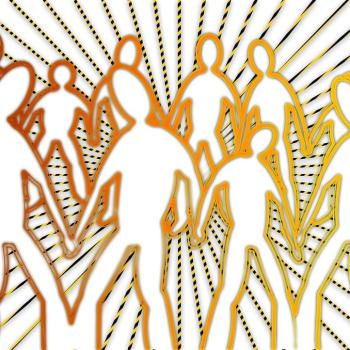
Cultural dynamics play an indispensable role in shaping the identity of individuals. Given the increasing globalization and intermingling of cultures, understanding these dynamics is crucial for those tasked with sharing the gospel across cultures. One striking dichotomy when discussing Eastern and Western cultures is the divide between individualism and collectivism.
These terms provide a lens through which to understand how societies prioritize personal and collective values. Both viewpoints profoundly shape the identity of their inhabitants.
Individualism in Western Culture
In the West, individualism is the dominant cultural paradigm. At its heart is the belief that individuals have rights and intrinsic worth. Societies rooted in individualism emphasize personal freedom, autonomy, and the pursuit of personal goals. Such cultures celebrate personal achievement and often regard success as the outcome of individual effort, initiative, and resolve.
Individualistic cultures encourage people from a young age to discover and express their unique identities. The focus on personal rights and achievements is reflected in social structures, from the legal system to education. For instance, Western democratic systems prioritize individual rights and freedoms, promoting the idea that every person should have an equal opportunity to succeed. This emphasis on personal freedom and equality means that individuals often see themselves as autonomous agents, responsible for carving out their own life paths.
Collectivism in Eastern Culture
By contrast, non-European and American cultures are often more collectivistic. Here, the group’s needs and goals — be it the family, community, or nation — take precedence over individual desires. Personal identity is intricately woven into the fabric of the group. Thus, individuals often find their value and role within the context of their relationships.
Collectivistic cultures prioritize maintaining social harmony and group cohesion. Consequently, individuals might sometimes suppress their own desires or opinions to avoid conflict or disruption. This is not necessarily seen as a sacrifice but rather as fulfilling one’s role within the group. Collective needs, whether about family honor, the community’s welfare, or national unity, often guide individual actions. Cultural rituals, traditions, and societal norms reinforce a deep-rooted sense of duty and obligation towards the group.
A Reminder
While the dichotomy of individualism and collectivism offers a valuable framework for understanding Eastern and Western cultures, it’s important to remember that all cultures are nuanced.
No society is purely individualistic or collectivistic.
However, by understanding these dominant trends, missionaries can more effectively communicate the gospel’s timeless message in culturally relevant ways. Recognizing these cultural dynamics can lead to more authentic, meaningful, and impactful cross-cultural interactions.
Individualism vs. Individuality
One more distinction is worth noting. What is the difference between individualism and individuality? While both social individualism and individuality emanate from the focus on the individual, their implications and the dynamics they create differ significantly.

Individualism Has Potentially Troubling Dynamics
- Priority of the Self over Community: Social individualism places the individual’s rights, needs, and desires over the collective or community. Such a perspective leads to a society with weakened communal bonds and shared responsibilities are overlooked. People then view communal or collective projects with suspicion, leading to decreased community involvement.
- Increased Competition: A society that promotes individualism often sees life as a competitive endeavor where individuals pit themselves against each other. Such environments promote constant comparison, fostering feelings of inadequacy or superiority.
- Isolation and Loneliness: With a heavy focus on individual success and autonomy, there’s a great risk that people will grow more isolated. The emphasis on self-reliance discourages seeking help or support, leading to increased feelings of loneliness or alienation.
- Consumerism: Social individualism often ties an individual’s worth to their economic productivity and consumer choices. This dynamic creates a cycle where self-worth is determined by material possessions, producing excessive consumerism.
- Loss of Cultural or Community Identity: When individual desires and rights are perpetually elevated above communal traditions and values, there’s an increased propensity for an erosion of shared cultural or community identity.
Individuality is a More Neutral Concept
- Inherent Human Trait: Individuality refers to the innate differences and unique traits that differentiate one person from another. It’s a neutral quality that every human possesses, regardless of the socio-cultural environment. As I like to tell my kids,
“You’re unique, just like everyone else.”
- Celebration of Diversity: Individuality encourages recognition and celebration of each person’s unique attributes. It doesn’t inherently place the individual above the community; instead, it acknowledges the diversity within groups.
- No Prescribed Behavior: While social individualism often comes with a set of prescribed behaviors or ideologies (e.g., self-reliance, prioritizing personal freedom), individuality doesn’t dictate how one behaves or thinks.
- Not Tied to Material Success: Unlike the potentially troubling dynamics of individualism tied to consumerism, individuality is more about personal characteristics and beliefs, not external measures of success.
Conclusion
Social individualism, as a socio-cultural philosophy, can disrupt communal bonds and emphasize competitive, self-centered behaviors. On the other hand, individuality, as an intrinsic aspect of human nature, remains a neutral concept that doesn’t inherently produce societal tensions. Recognizing the distinction between these two is crucial for understanding the dynamics they create within communities and societies.













